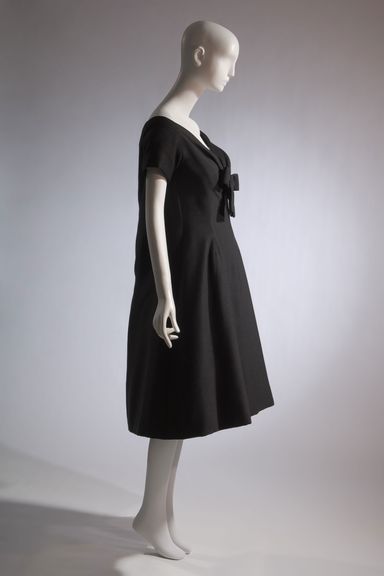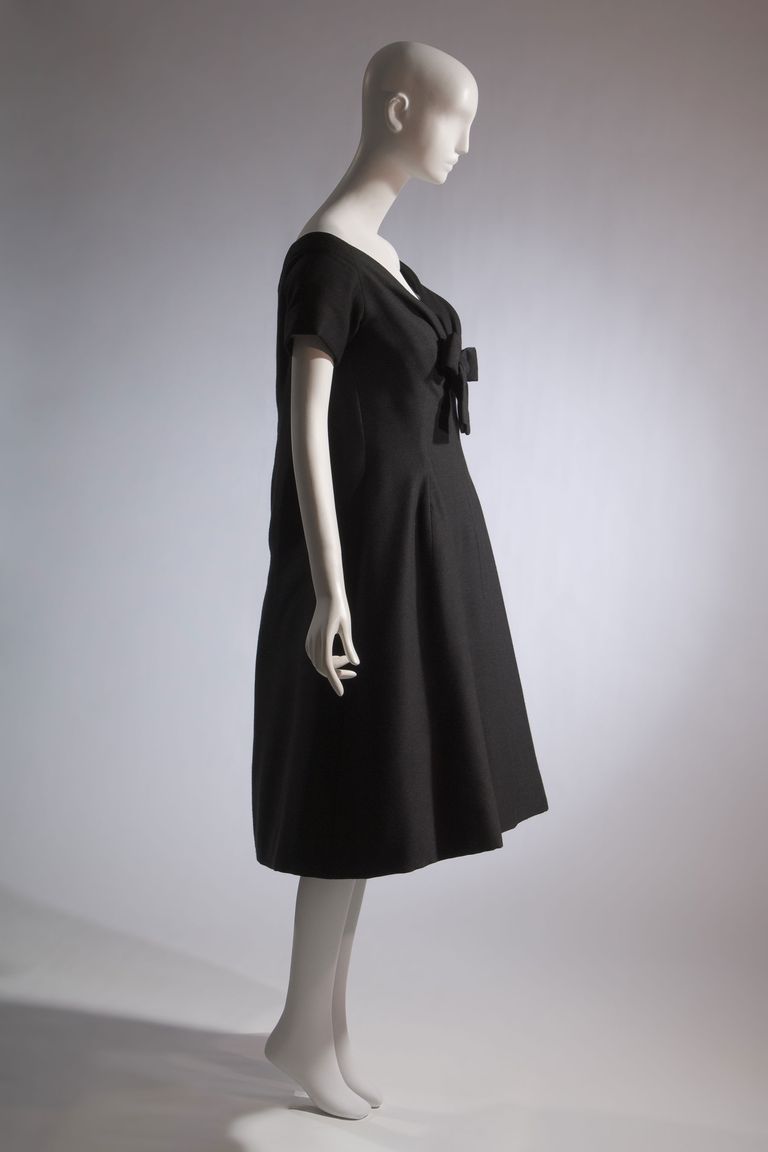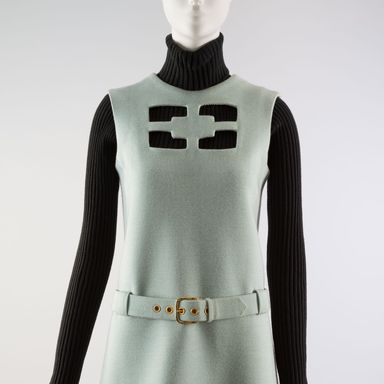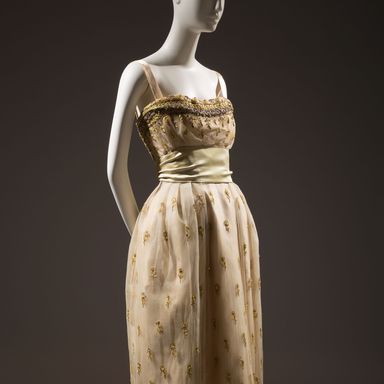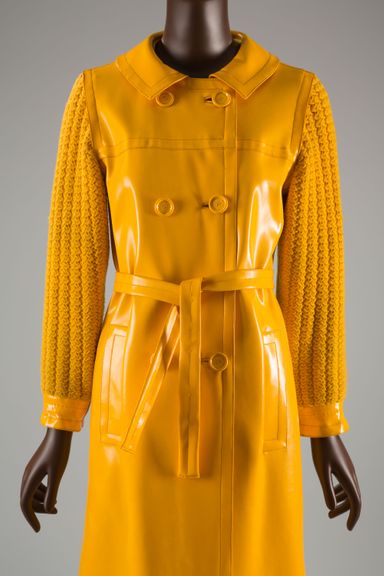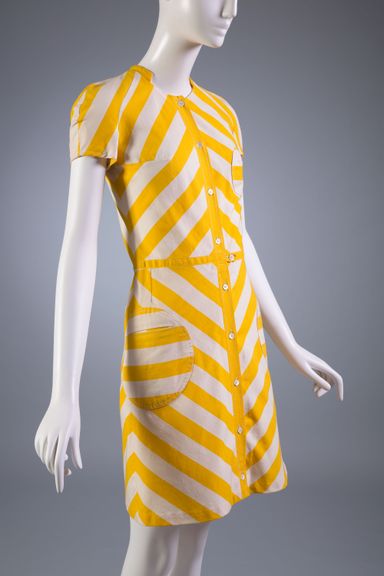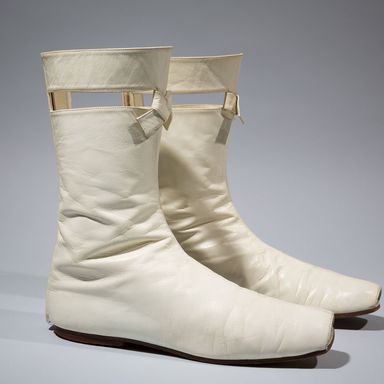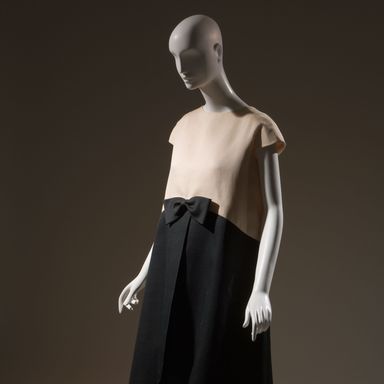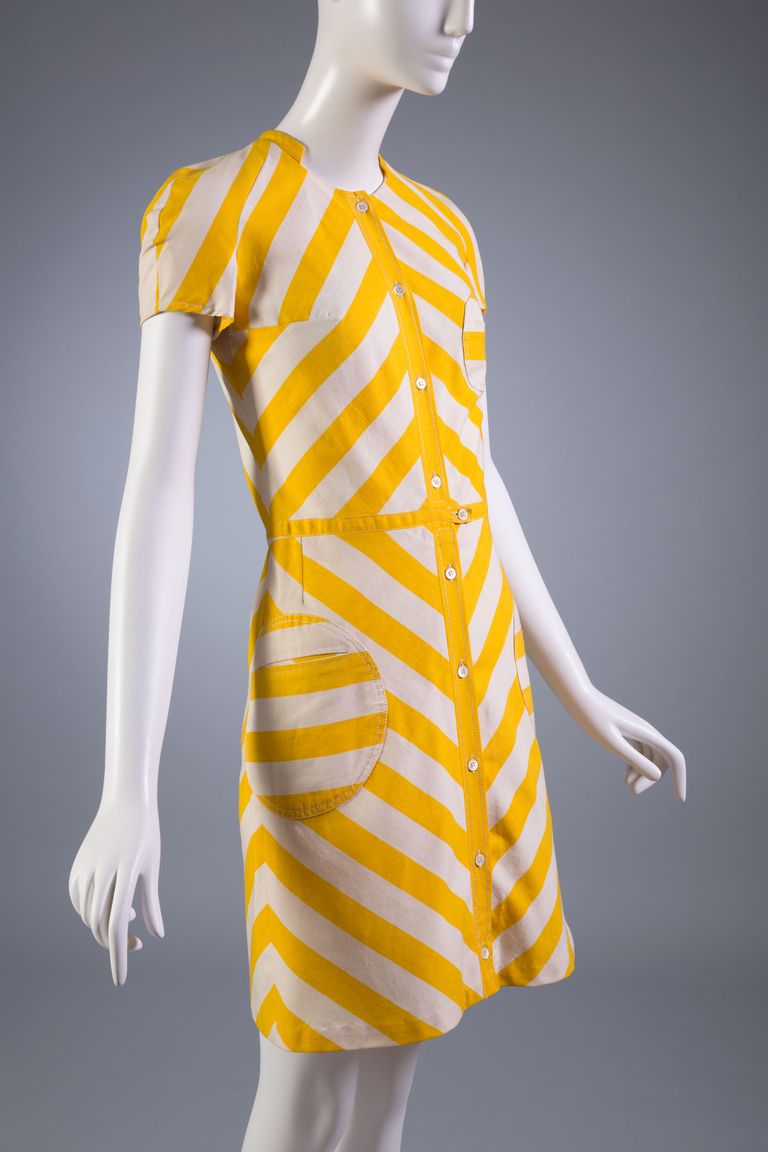A New Exhibit of 1960s Paris Fashion Reminds Us That Everything Is Cyclical
When you enter the first gallery room at the Museum at FIT, you encounter a restaging of a 1950s Parisian couture atelier. In the low-lit space there are 115 suits, pantsuits, day dresses, cocktail dresses, hats, and shoes displayed on custom-built Plexiglas platforms. The exhibit “Paris Refashioned,” which opened February 10, weaves together ready-to-wear and couture garments made between 1957 and 1968 — a period when French design houses dominated the international fashion market.
As the show’s curator Colleen Hill told the Cut, “I wanted to start in 1957 because that is the year Christian Dior died, [and since] he had reigned fashion for about a decade, his death was devastating to the fashion world.” Hill traced the career trajectories of emerging and established designers, paying special attention to designers who were young and unknown when they began working with a bold-faced atelier. For example, while he never worked formally for Cristóbal Balenciaga, Hubert de Givenchy was his protégé; as Hill explained, Balenciaga “kind of took him under his wing, they often worked closely together, and their collections would look similar.” Two other examples include Yves Saint Laurent and Pierre Cardin, who both designed for Christian Dior in the early stages of their creative careers.
After Dior’s death, Laurent — a 21-year-old, largely unknown designer — became his successor. To show the shift in design philosophy, Hill included an object from Laurent’s first collection as the head designer: an A-line trapeze dress that “really foreshadows what we see in the 1960s; it’s a little short, kind of swingy, and youthful looking.” The “smartest couturiers,” she continued, “started to understand that ready-to-wear is the fashion of the future, [and so] they started to launch their own lines, taking cues from exclusively ready-to-wear designers like Emmanuelle Khanh and Michèle Rosier.”
In an interview in Life magazine in 1964, Khanh, who modeled for Balenciaga before launching her own line, said that “Balenciaga treated us [models] like chairs” and that his clothes “don’t make a woman alive and pretty; it makes her look wealthy and that to me is completely obsolete.” By the mid ‘60s, new silhouettes and more accessible everyday garments grew in popularity.
Hill points to Laurent and André Courrèges as being “very influential in making pantsuits for all types of occasions and putting that couturier stamp on the style.” Courrèges in particular “really lauded the idea of women in pants as this idea of modernity and this new more active woman.”
The main gallery, which addresses the rivalry between ready-to-wear and couture-only designers in the ‘60s, is staged to look like a boutique-dotted Paris street. There are dark, gridded screens that divide the space and (as Hill said) “suggest [both] building edifices and dressing-room screens.” Dress forms vary wildly, with some garments displayed on vintage wooden busts with articulated arms and others on more modern, monochrome mannequins. Archival photos and video segments mounted on the walls aid in demonstrating the cultural changes afoot. Garments from the ‘60s tended to be more vibrant and constructed more simply. With the exception of some explanatory labels, there are no clear distinctions between which of the garments on display are ready-to-wear and which are couture — which is apt, since this time period was when those categories blended together.
All objects in the show are from the Museum’s permanent collection, including a paisley Nina Ricci dress once worn by Warhol superstar “Baby Jane” Holzer; a cheery yellow Emmanuelle Khanh sundress designed for Mademoiselle editor Sandy Horvitz; several Balenciaga outfits owned by Doris Duke; and a two-piece black Givenchy number owned by the socialite and philanthropist Isabel Eberstadt.
In preparation for the show, the Museum’s senior conservator Ann M. Coppinger shared how challenging it is to maintain faux leathers and synthetic fabrics, as they can delaminate and crack. And since Coppinger takes a conservation approach rather than a restorative one, when she finds a stain on a garment, she leaves it.
Click ahead to see stand-out designs from the show — white leather André Courrèges boots, a crimson-colored Chanel suit from the late 1950s, and a high-sheen yellow raincoat from YSL’s Rive Gauche boutique that mirrors Raf Simons’s hit plastic-covered wrap coat for Calvin Klein.
“Paris Refashioned, 1957–1968” will be on view at the Museum at FIT until April 15.
